Entretien avec Erica Baum, septembre 2015, Paris.
C - Dans cette exposition, vous présentez des œuvres de la série Blackboards, la plus ancienne de votre carrière. Pouvez-vous les décrire? Êtes-vous d’accord si l’on dit qu’elles portent en germe tout ce que vos séries suivantes contiennent?
EB - Quand j’étudiais la photographie à Yale, j’ai commencé à y photographier la vie universitaire et j’ai fait toute une série sur les étudiants et leur vie. J’ai commencé à être attentive aux textures et aux mots qui les entourent, et comme j’ai étudié la littérature et l’anthropologie, j’ai été sensible aux institutions et aux structures dans lesquelles ils évoluent. Commencer à photographier les tableaux noirs a été un moment clé pour moi parce que j’ai pris conscience que je pouvais combiner l’intérêt que je portais à la littérature et l’intérêt que je portais à l’anthropologie en en donnant une expérience visuelle plus abstraite. Pour la première fois, c’était ma propre voix.
Ce que je voyais, c’était des traces de cours, ce que le professeur avait laissé sur le tableau, comme un écho de l’enseignement qui s’y déroulait. C’était comme un mystère, comme quelque chose qui avait eu lieu mais sans que cela ne nous soit destiné, quelque chose d’intermédiaire, destiné à quelqu’un d’autre. En le photographiant, je capturais un moment qui avait vocation à être effacé. C’était prendre quelque chose d’extrêmement éphémère et l’ancrer sur une photographie, quelque chose comme un flux qu’on arrête. Dans ce qu’on peut considérer comme des territoires de langage indéterminé, je retrouvais des notions que j’avais étudiées en linguistique, à propos du signifiant et du signifié, et ce qui distingue les deux. Pour la première fois, je le dis à nouveau, j’avais trouvé le chemin de ma propre voix en photographie.
C - C’est intéressant cette question des institutions, de la façon dont la connaissance est retranscrite, et disséminée, par exemple dans le monde universitaire.
EB - C’est quelque chose dont je suis devenue plus consciente avec le temps, en particulier avec la série Card Catalogues, mais déjà, dans les Blackboards, cette notion de système de transmission de la connaissance était présent. Comme si je proposais la possibilité d’être conscient de ce système, mais sans le montrer complétement du doigt. Ce qui m’intéresse ce sont les différents niveaux de références et le fait que l’on puisse ressentir quelque chose d’un environnement donné, sans percevoir forcément l’ensemble de cet environnement. Quand j’évoque les structures, il s’agit des structures qui forgent l’université, là où les gens viennent et apprennent. Mais je propose un angle oblique vers cette structure. Je souhaite que l’on soit conscient des territoires visuels dans lesquels on est immergé. Cela vient d’un vrai tableau noir, et d’un vrai système d’enseignement, mais c’est envisagé tout seul.
C - L’une de vos séries les plus iconiques est The Naked Eye. Elle fera au mois d’octobre l’objet d’une prochaine publication, co-éditée par bureau et œ/Crèvecœur. Pouvez-vous me dire, en partant de The Naked Eye, quels sont les liens, en terme de méthodologie et de système, entre les différentes séries présentées dans l’exposition?
EB - Ce qui lie tous ces travaux c’est l’idée qu’il s’agit de choses que les gens rencontrent tous les jours dans leur vie quotidienne. Depuis les Blackboards, qui proviennent d’une situation très précise, il y a - et c’est une phrase que j’ai déjà utilisée - un itinéraire non manipulé vers l’abstraction.Il y a une rencontre directe entre quelque chose qu’on voit tous, qu’on connaît tous, et quelque chose qu’on voit soudain d’une façon tout à fait singulière. Je cherche cette dualité : dans une action ordinaire, on peut créer quelque chose d’extraordinaire.
C - Vous êtes à la recherche d’épiphanies.
EB - J’ai été dans une exposition au Metropolitan Museum qui s’appelait Everyday Epiphanies. Oui c’est tout à fait ce que je pense, ou disons ce que j’espère!
Par exemple, avec les Dog Ears, l’idée vient de l’acte élémentaire de la lecture. Quand je lis et que je m’arrête de lire, j’écorne la page pour ne pas la perdre. J’essaie de donner une expérience différente de quelque chose qu’on fait habituellement. Cette approche, je la garde comme un principe générateur pour la plupart de mes productions.
Dans les Naked Eye, on retrouve l’expérience des contraintes que provoque la séquence des pages d’un livre, mais selon un autre procédé : le livre est ouvert et on y jette un coup d’œil. C’est ce coup d’œil qui crée les différentes juxtapositions. Mais cela existe bel et bien.
C’est cette tension entre ce qui existe, entre ce qu’on rencontre et le fait qu’on peut le regarder de façon tout à fait différente qui crée une étrangeté dans laquelle se nichent des potentiels infinis. Cela a commencé avec les Blackboards. Tu marches vers un tableau noir, tu t’immobilises, tu regardes encore une fois et tu te dis : dans ces choses que je pensais avoir reconnues, tout est différent.
Les Fields, une toute nouvelle série, sont des images provenant de vieux livres. Il s’agit encore de cela, trouver quelque chose de nouveau à l’intérieur de quelque chose qu’on a déjà. Mais cette série contient aussi des images que je fais moi-même. J’aime cette idée de circularité : on peut s’approprier les images, on peut les utiliser, c’est la façon dont les images circulent dans notre monde. Bien entendu, cela, on le sait tous, c’est l’ubiquité des images et de la production d’images.
Ce qui m’intéresse, c’est que les Fields sont en noir et blanc, et qu’il s’agit donc d’un registre différent. Aujourd’hui plus que jamais, faire une photographie en noir et blanc, c’est un choix conscient. A l’origine, la photographie était en noir et blanc, c’était son réglage par défaut. Il a fallu du temps pour que la couleur devienne une pratique prise au sérieux par les photographes. Maintenant la plupart des images qu’on voit sont en couleur. Choisir de faire une image en noir et blanc, comme les Fields, c’est une démarche. Quand je faisais les Blackboards, en 1994-1996, je voulais travailler avec un appareil grand format, je voulais faire des tirages en chambre noire. Cela avait du sens que ce soit en noir et blanc. Puis, avec la série The Naked Eye, cela avait du sens que ce soit en couleur.
Les Stills sont quelque part entre les Dog Ears et les Naked Eyes. Comme cela fait longtemps maintenant que je travaille avec l’imprimé, j’ai une conscience aiguë des couleurs, des textures du papier, du registre des images et des différents moyens de reproduire l’imprimé. C’est ce niveau très fort d’attention à ces différents éléments qui m’intéresse dans les sujets des Stills.
C - Comment sélectionnez-vous une image en particulier, parmi toutes celles que vous faites?
EB - Pour chacune de mes séries, je retourne à un procédé similaire à celui que j’utilisais quand je faisais des tirages en chambre noire, comme aux origines de la photographie. Il y avait alors un intervalle de temps entre le moment de la prise de vue, le moment où l’image était développée, et le moment où la décision était prise. Dans toutes mes séries, même si je ne fais plus de tirages en chambre, j’ai gardé cet intervalle. J’ai compris qu’il me fallait du temps. Avoir du temps entre la prise de vue et la décision, c’est très important, parce que cela permet d’être plus exigeant.
Je fais beaucoup d’images. Et la sélection prend du temps. Le fait même que je fasse autant d’images, beaucoup plus que lorsque je travaillais en argentique avec des appareils grand format signifie que je passe beaucoup de temps à choisir l’image. D’une certaine façon, on est dans le même rapport de temps que lorsque je faisais des tirages en chambre. Simplement, les critères deviennent plus difficiles, même si je bénéficie désormais d’une meilleure connaissance de ce que je fais.
C - Stanzas suggère une forme poétique. La photographie c’est étymologiquement “l’écriture de la lumière”. Dans une interview donnée à Art in America en 2013, vous disiez avoir d’abord voulu être écrivain. Il semble qu’être devenue photographe est une évolution naturelle de ce premier désir.
La photographie a été pour moi le moyen de lier ces intérêts fondamentaux : l’anthropologie, la littérature et l’art. J’ai toujours beaucoup lu, et en effet je voulais devenir écrivain. Mais je peignais aussi, je faisais des collages. Quand j’avais vingt ans, j’ai décidé de faire de la photographie. Et c’est devenu pour moi une façon d’écrire.
Stanzas, le titre de l’exposition, m’est venu lorsque je réfléchissais à la façon dont les différentes sections de l’exposition étaient dessinées. Les strophes composent le poème, mais elles ont chacune leur propre forme. C’est un hommage à un certain engagement envers le langage, envers l’imprimé, envers les façons dont on voit les choses à travers ces médiums. Stanzas est une façon de faire coïncider cela avec la littérature.
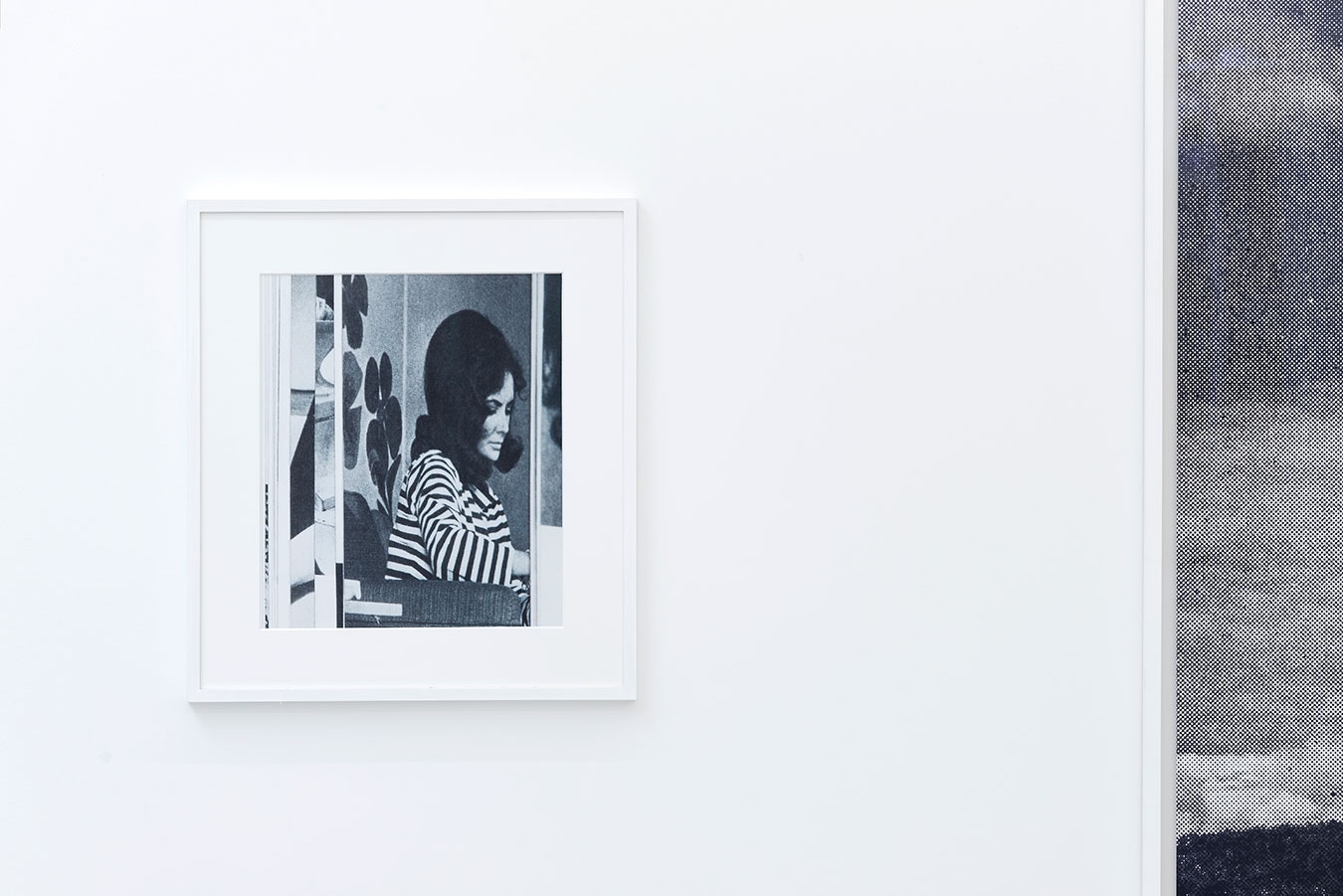 Loading
Loading 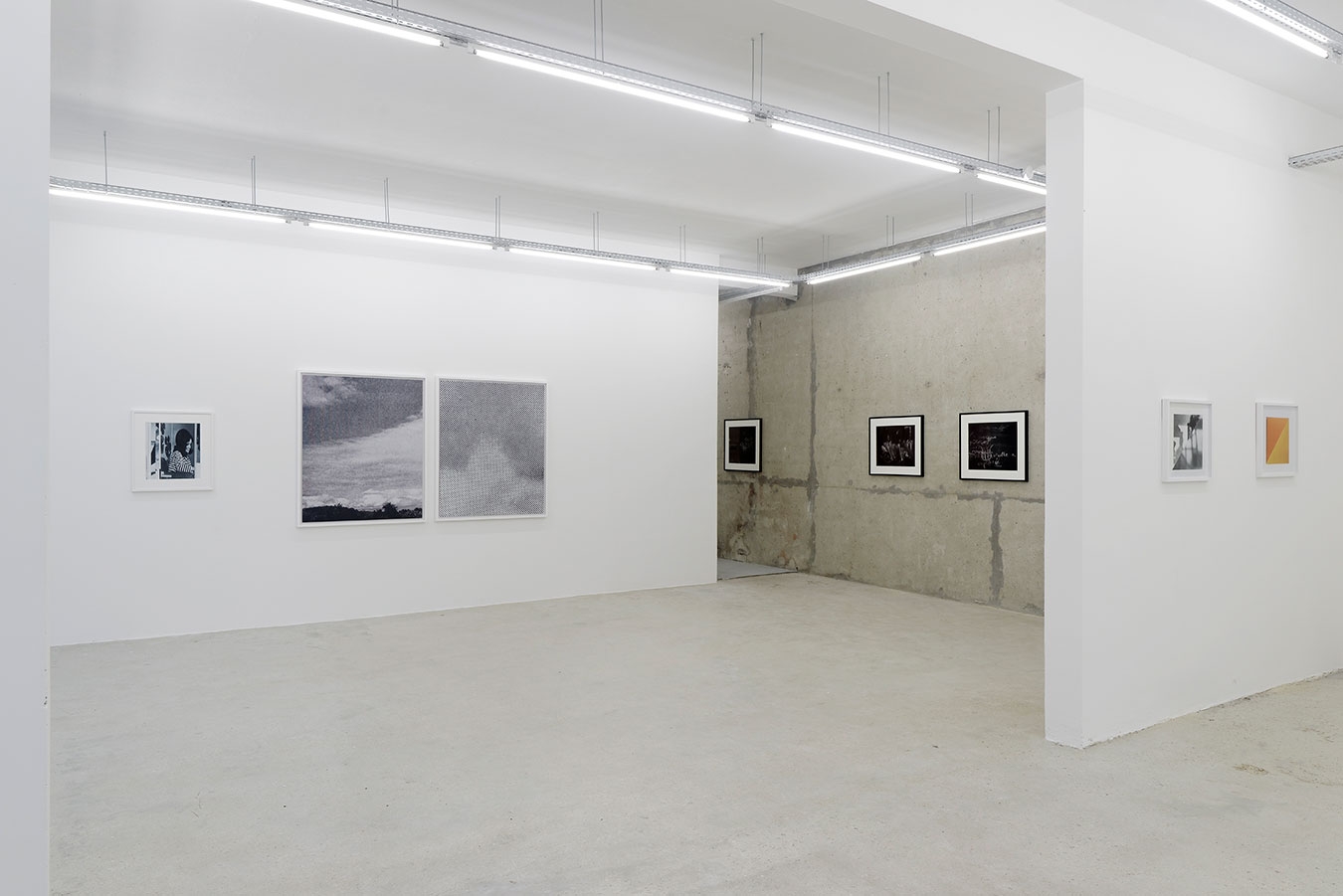 Loading
Loading Stanzas, 2015, exhibition view, Crèvecœur, Paris. © Aurélien Mole
 Loading
Loading Stanzas, 2015, exhibition view, Crèvecœur, Paris. © Aurélien Mole
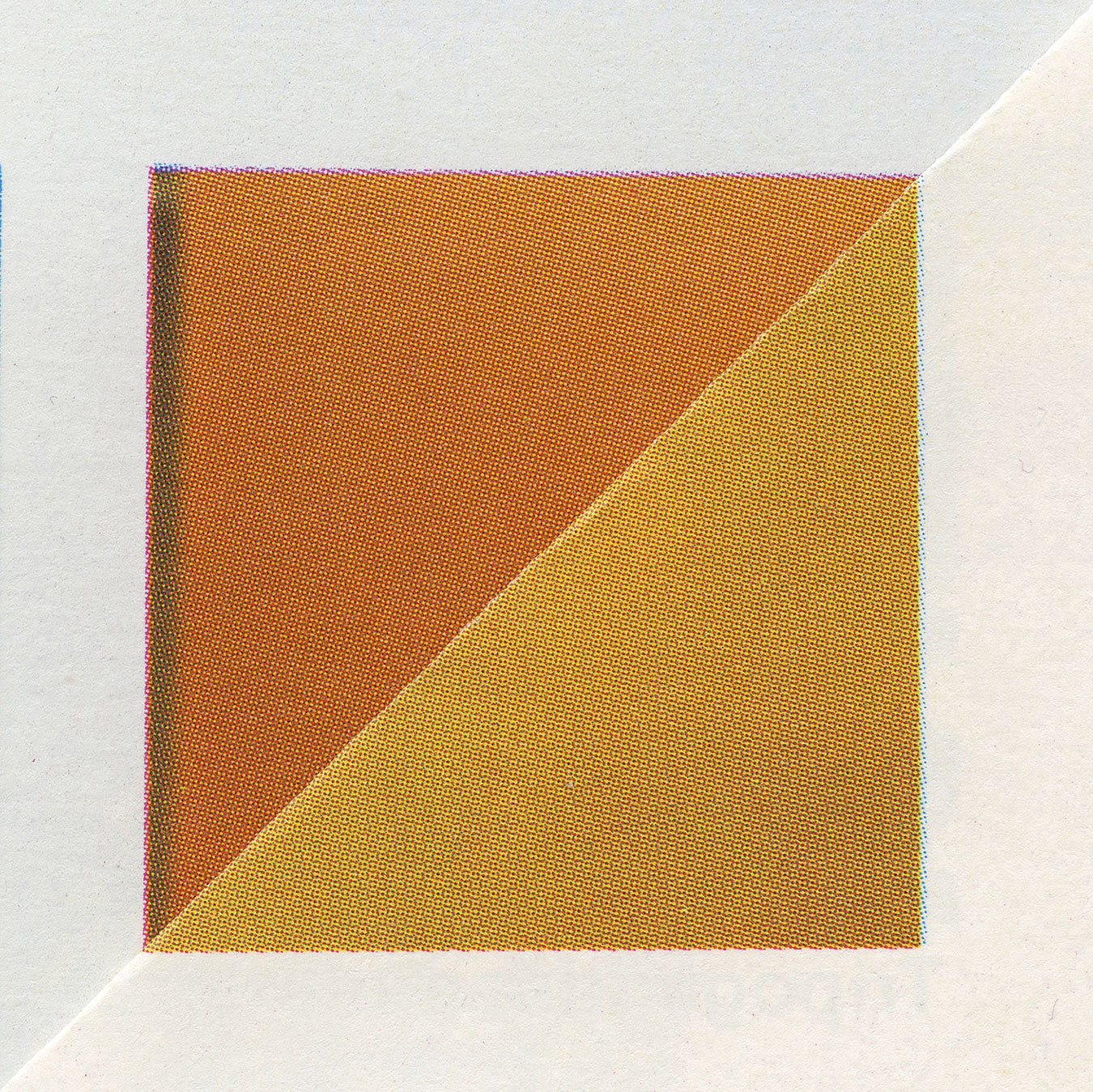 Loading
Loading Audrey (Stills), 2015, archival pigment print, 38 × 38 cm. © Erica Baum
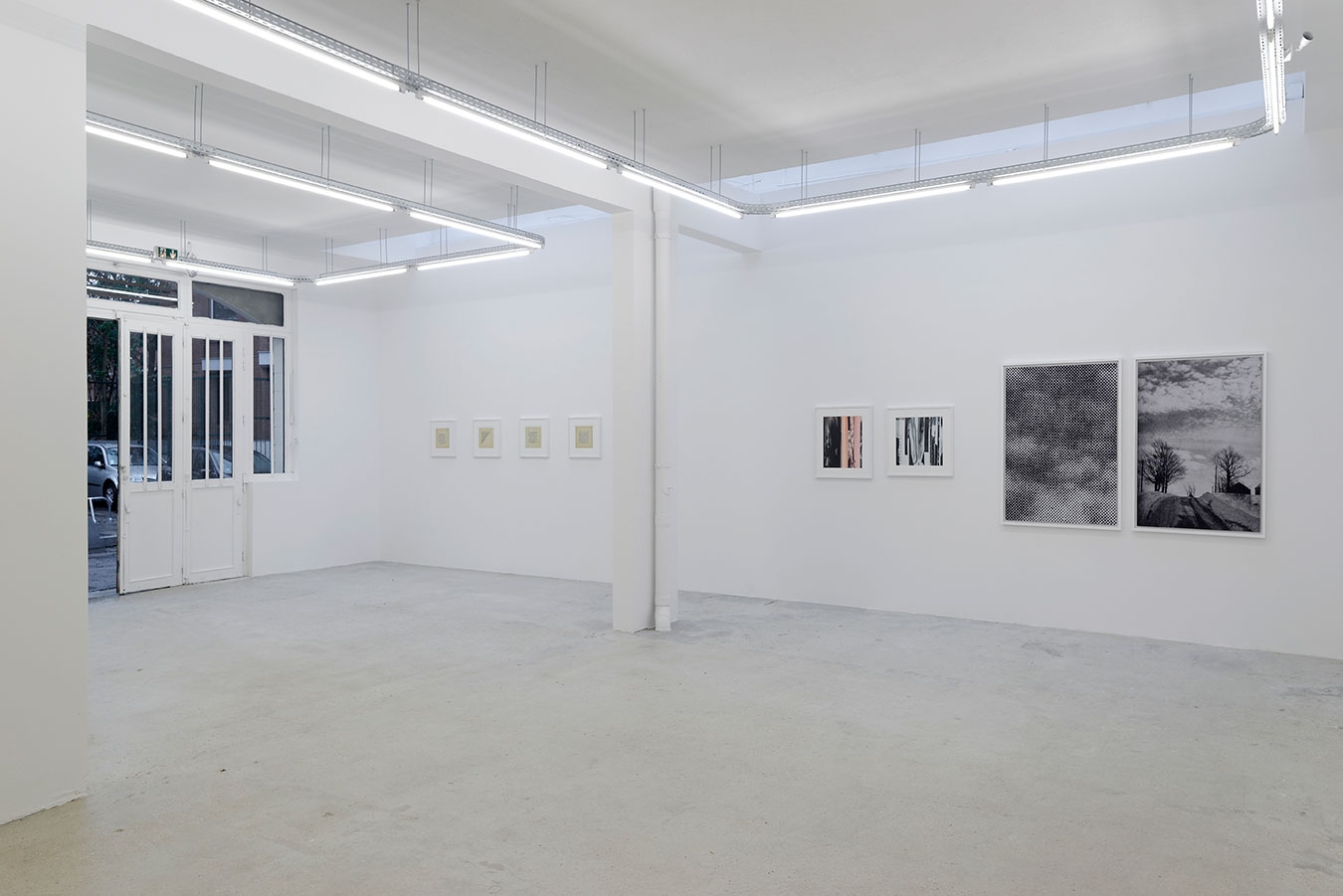 Loading
Loading Stanzas, 2015, exhibition view, Crèvecœur, Paris. © Aurélien Mole
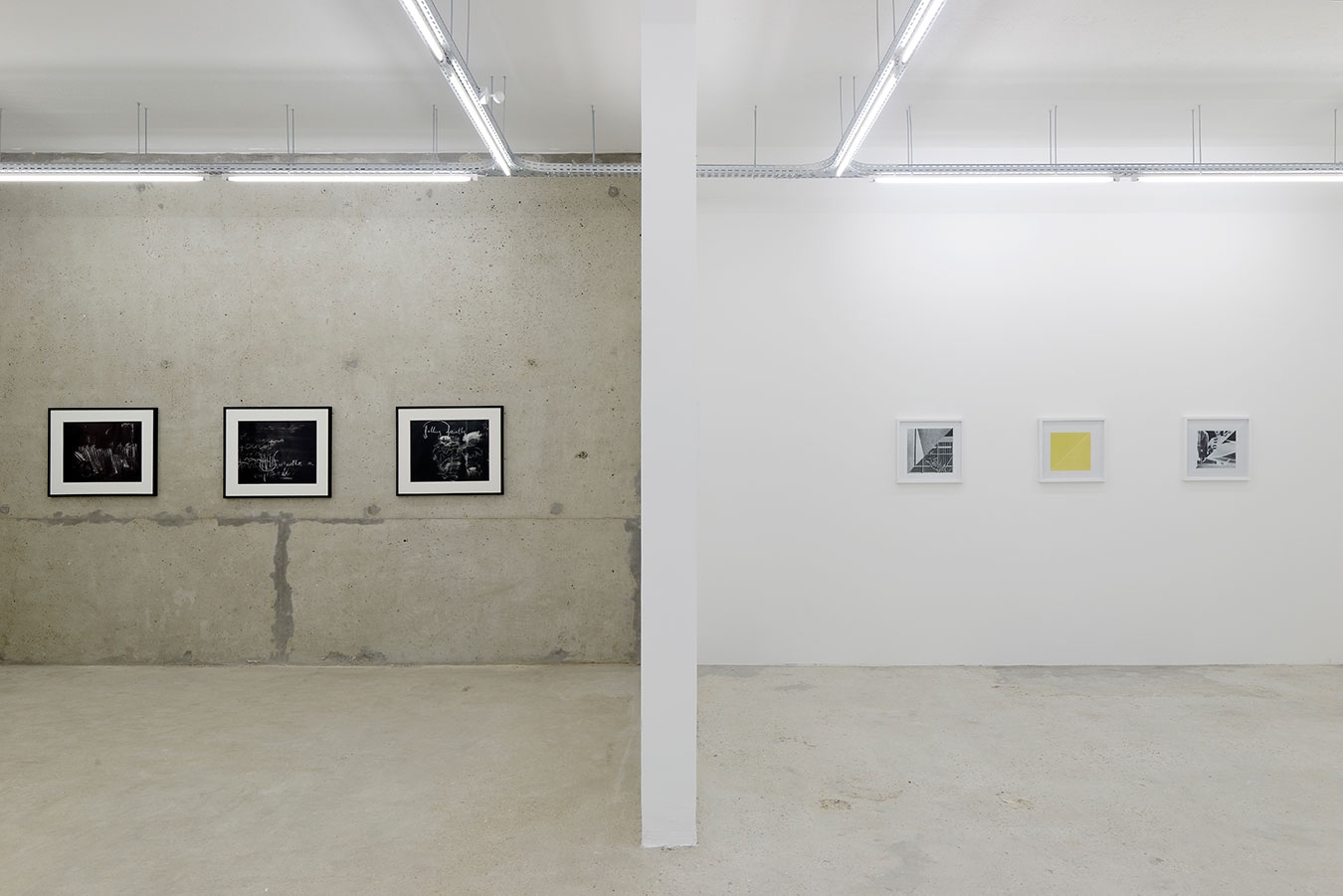 Loading
Loading Stanzas, 2015, exhibition view, Crèvecœur, Paris. © Aurélien Mole
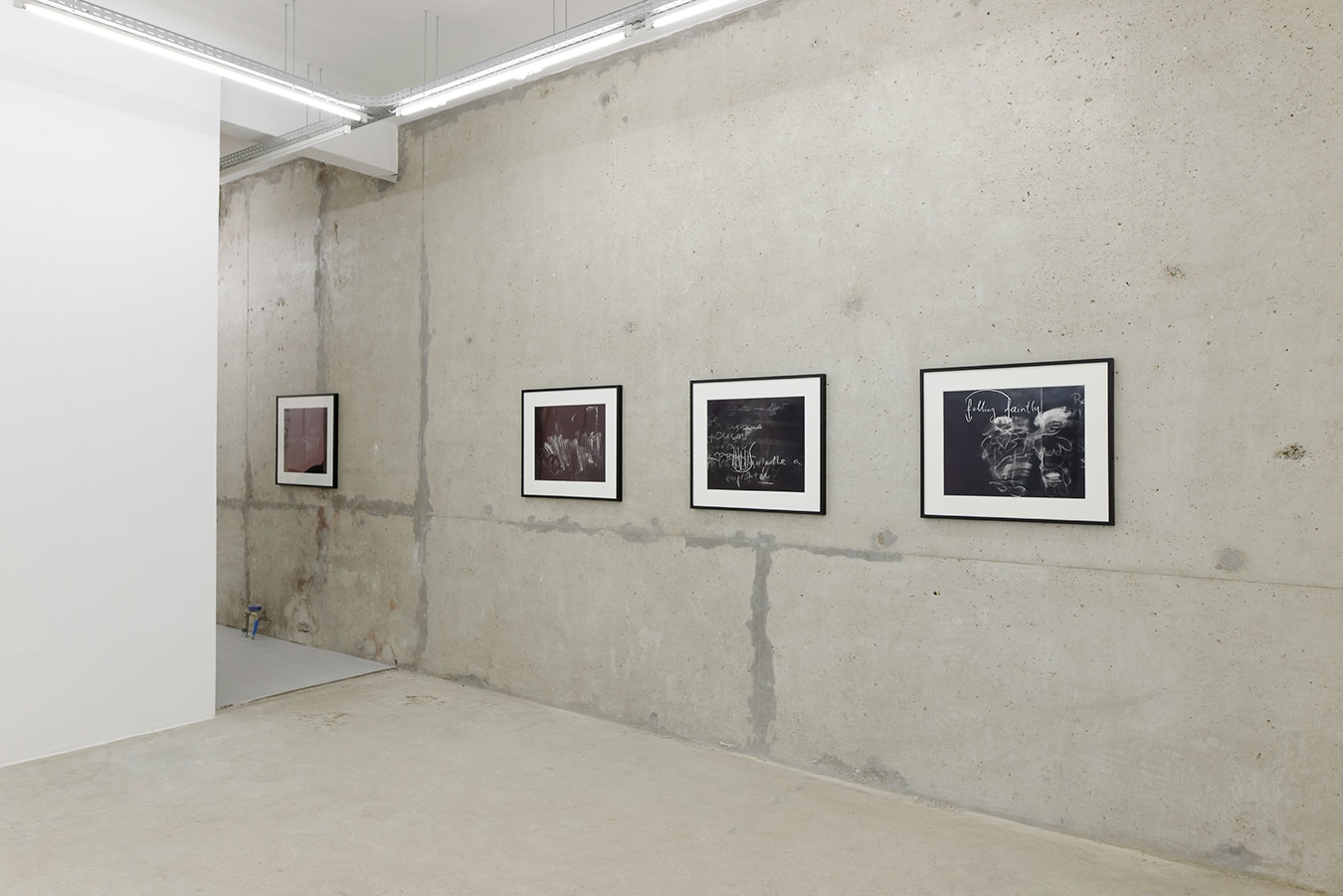 Loading
Loading Stanzas, 2015, exhibition view, Crèvecœur, Paris. © Aurélien Mole
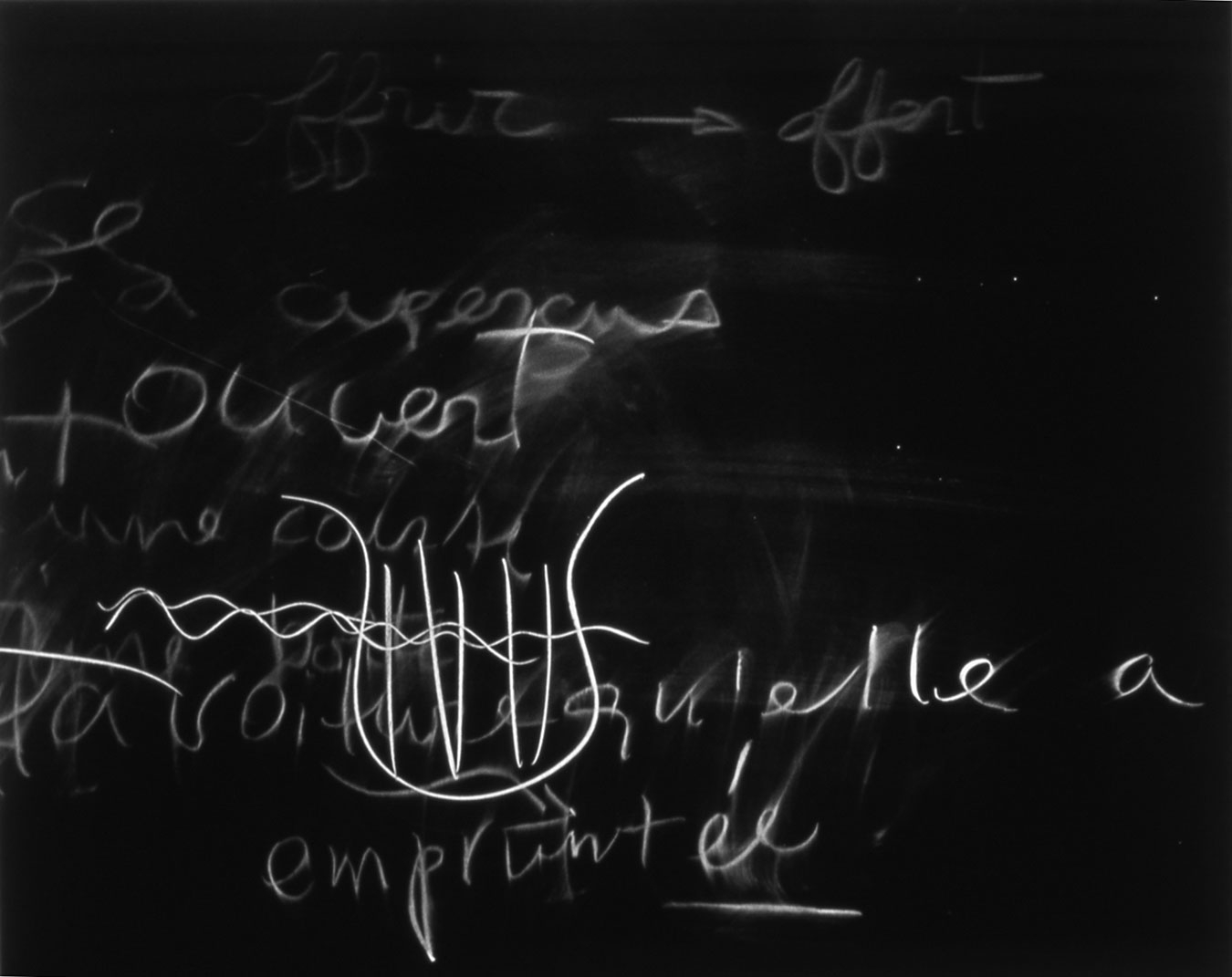 Loading
Loading Untitled (Ouvert) (Blackboard), 1994, gelatin silver print, 51 × 61 cm. © Erica Baum
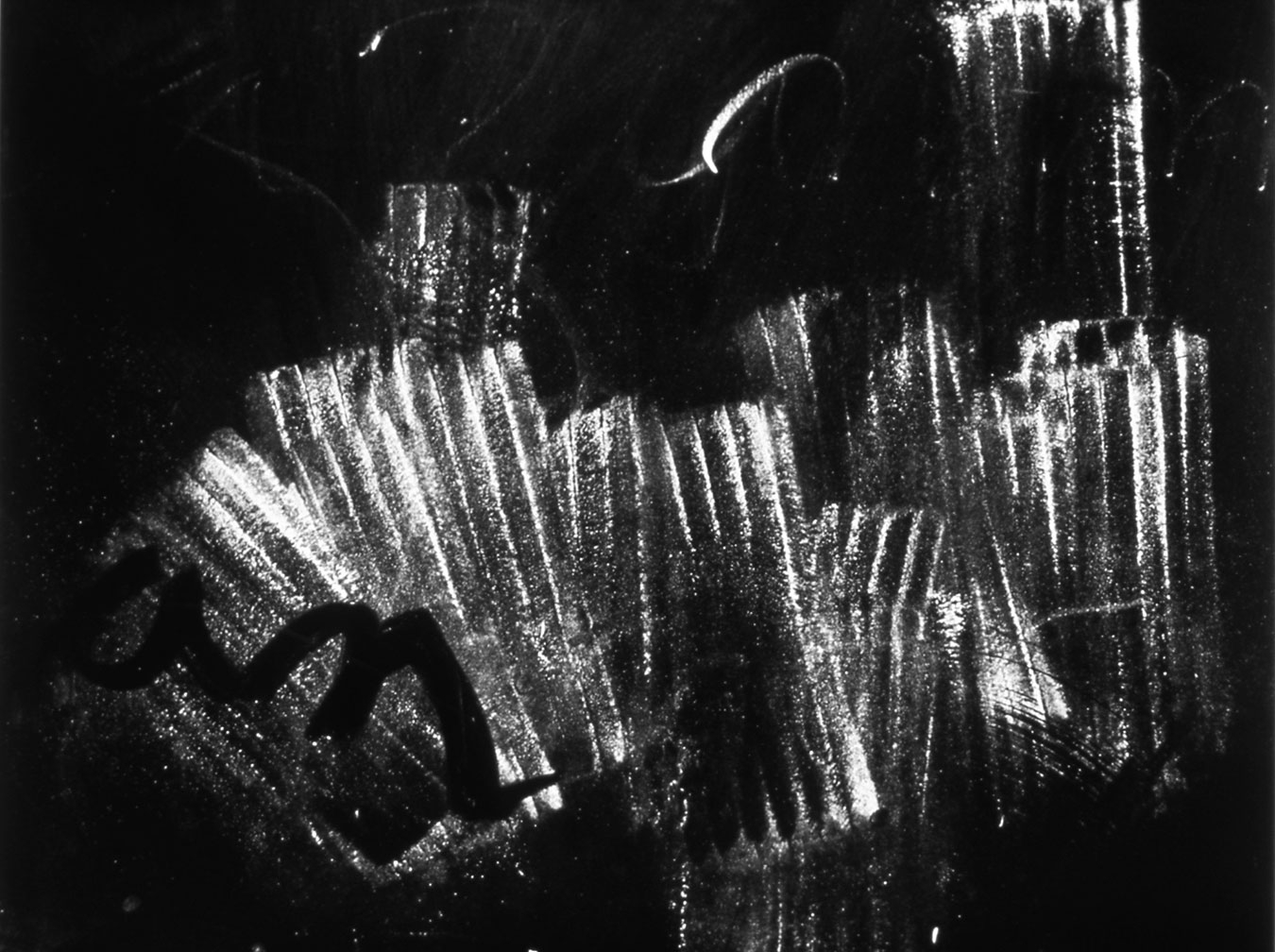 Loading
Loading Untitled (erasers) (Blackboard), 1996, gelatin silver print, 51 × 61 cm. © Erica Baum
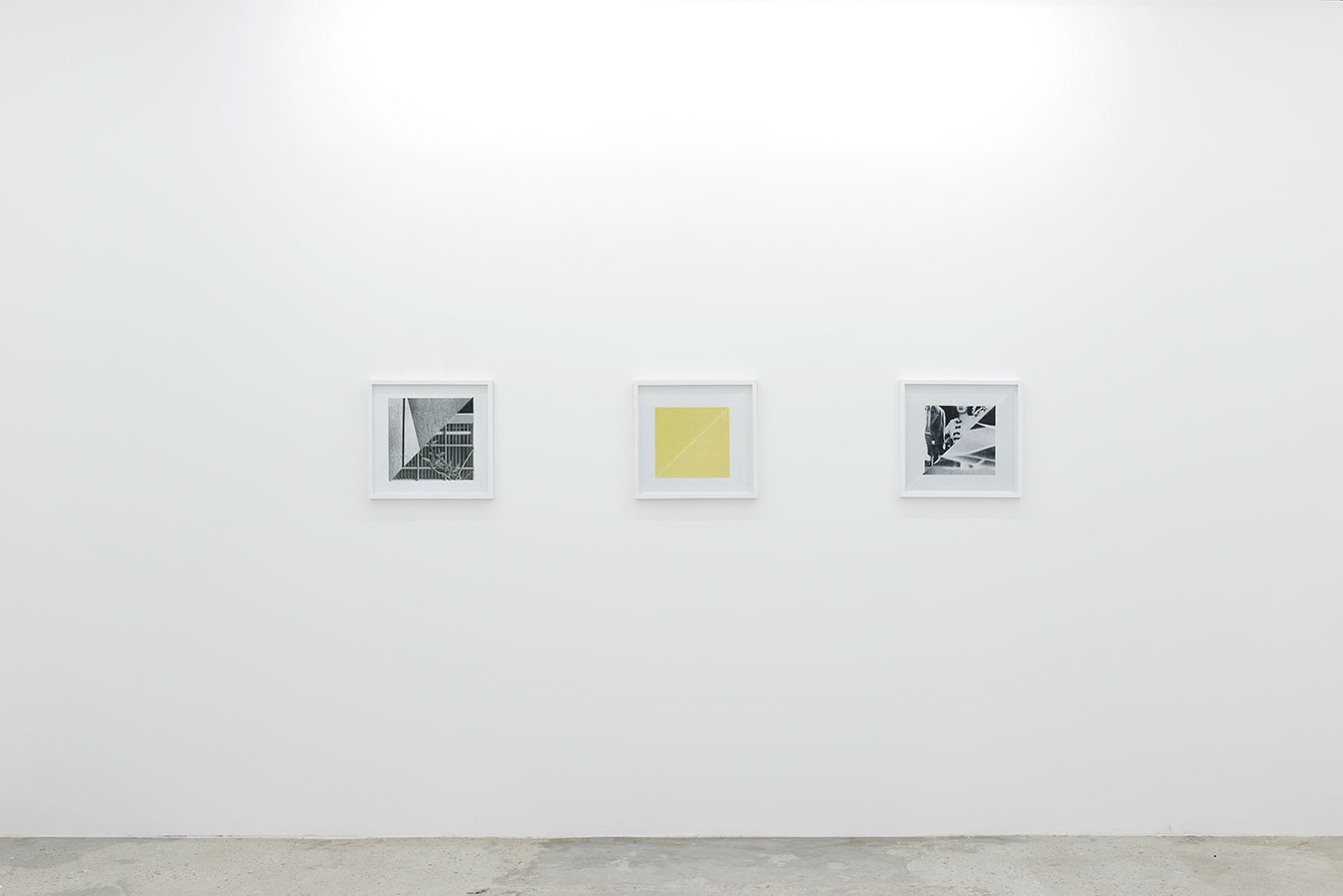 Loading
Loading Stanzas, 2015, exhibition view, Crèvecœur, Paris. © Aurélien Mole
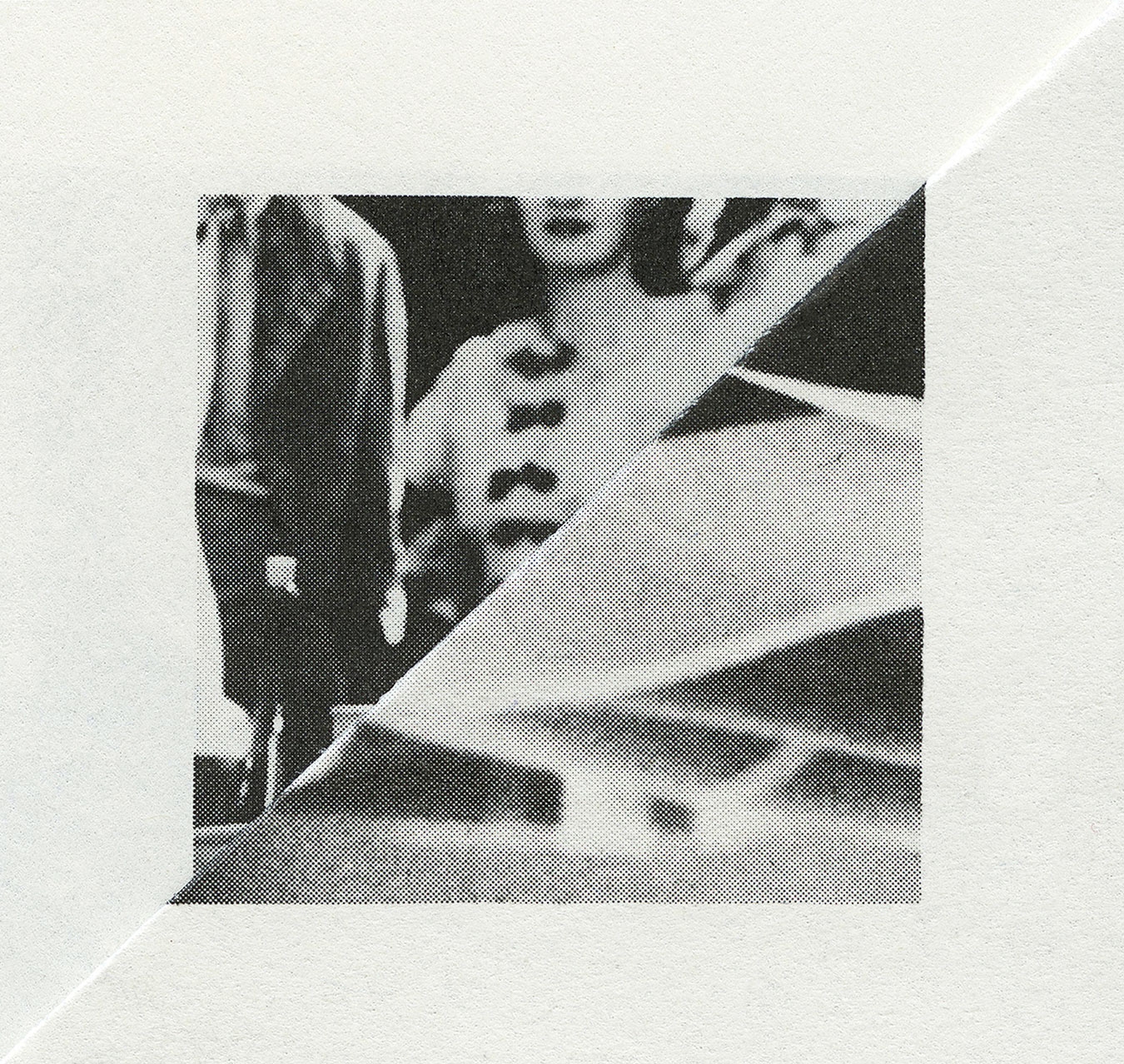 Loading
Loading Pageant (Stills), 2015, archival pigment print, 38 × 40 cm. © Erica Baum
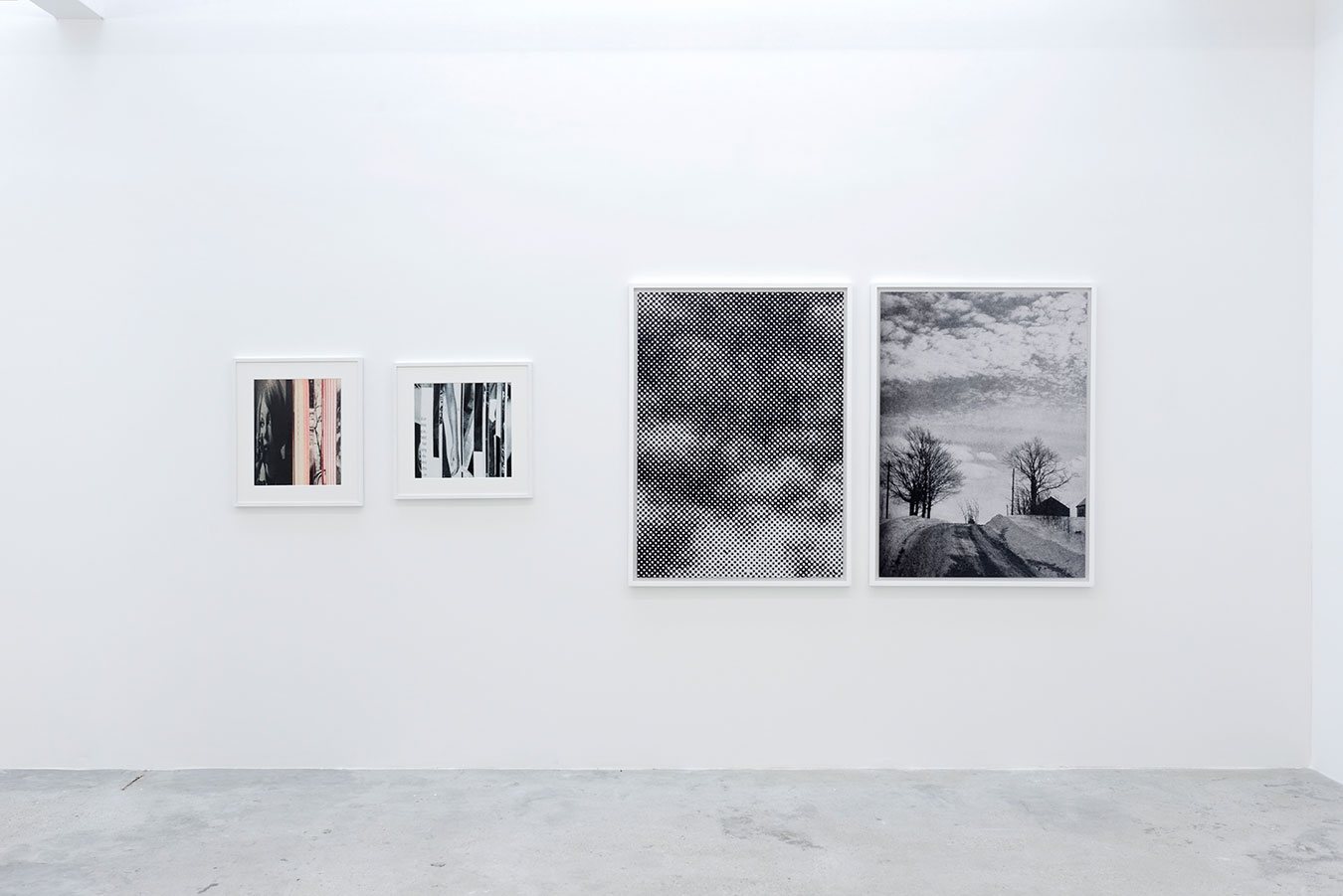 Loading
Loading Stanzas, 2015, exhibition view, Crèvecœur, Paris. © Aurélien Mole
 Loading
Loading Stanzas, 2015, exhibition view, Crèvecœur, Paris. © Aurélien Mole
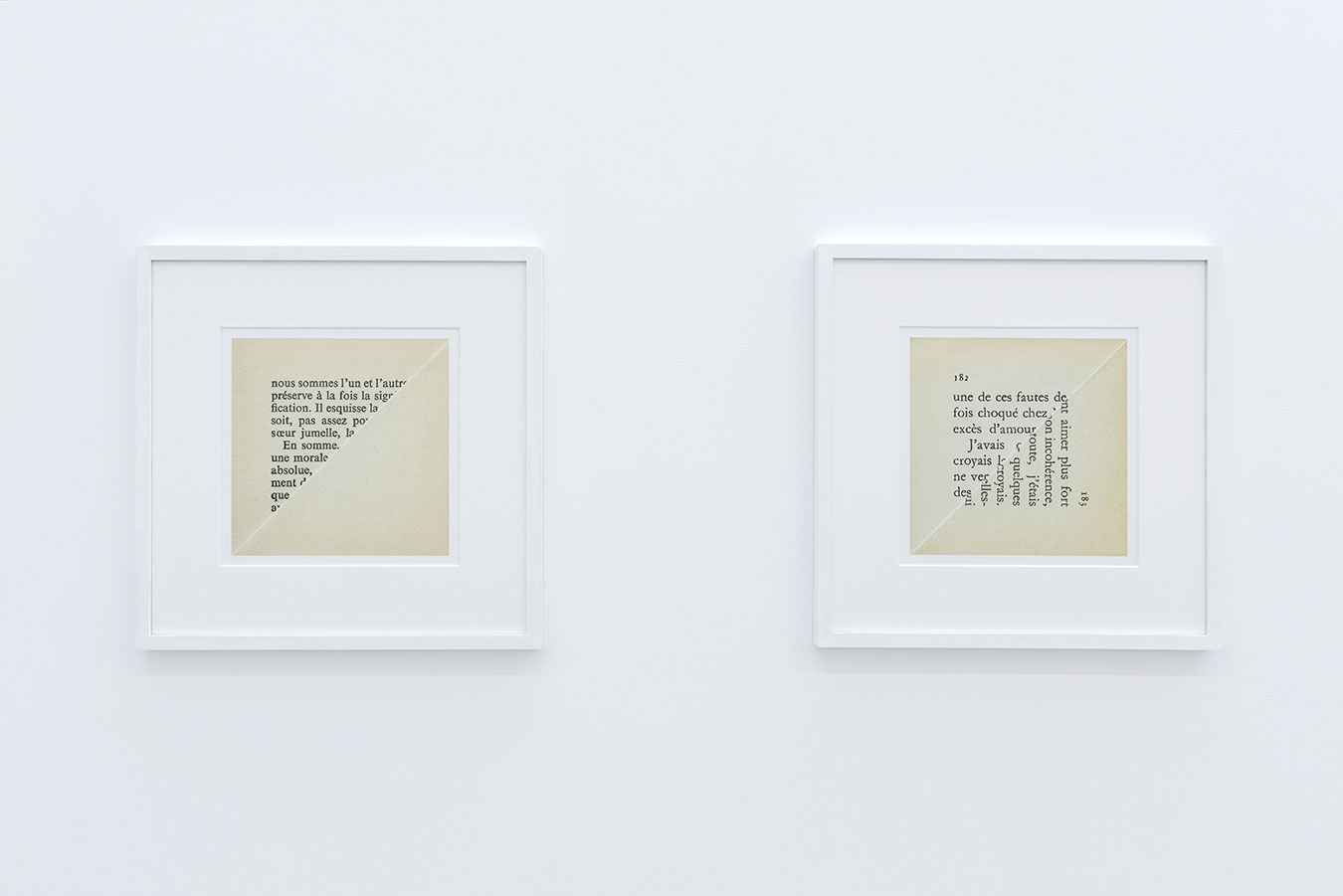 Loading
Loading Stanzas, 2015, exhibition view, Crèvecœur, Paris. © Aurélien Mole
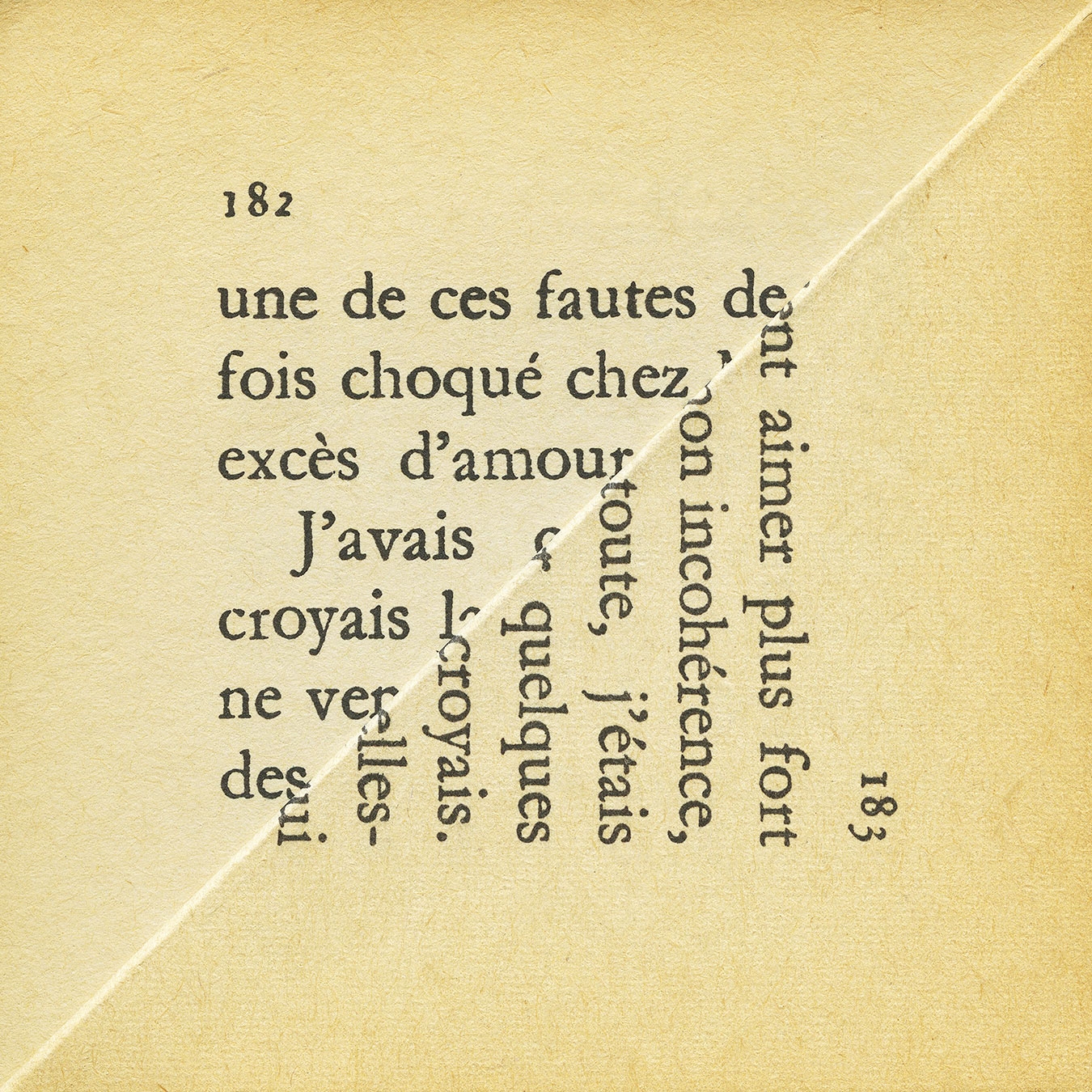 Loading
Loading Incoherence (Dog Ear), 2015, archival pigment print, 23 × 23 cm. © Erica Baum
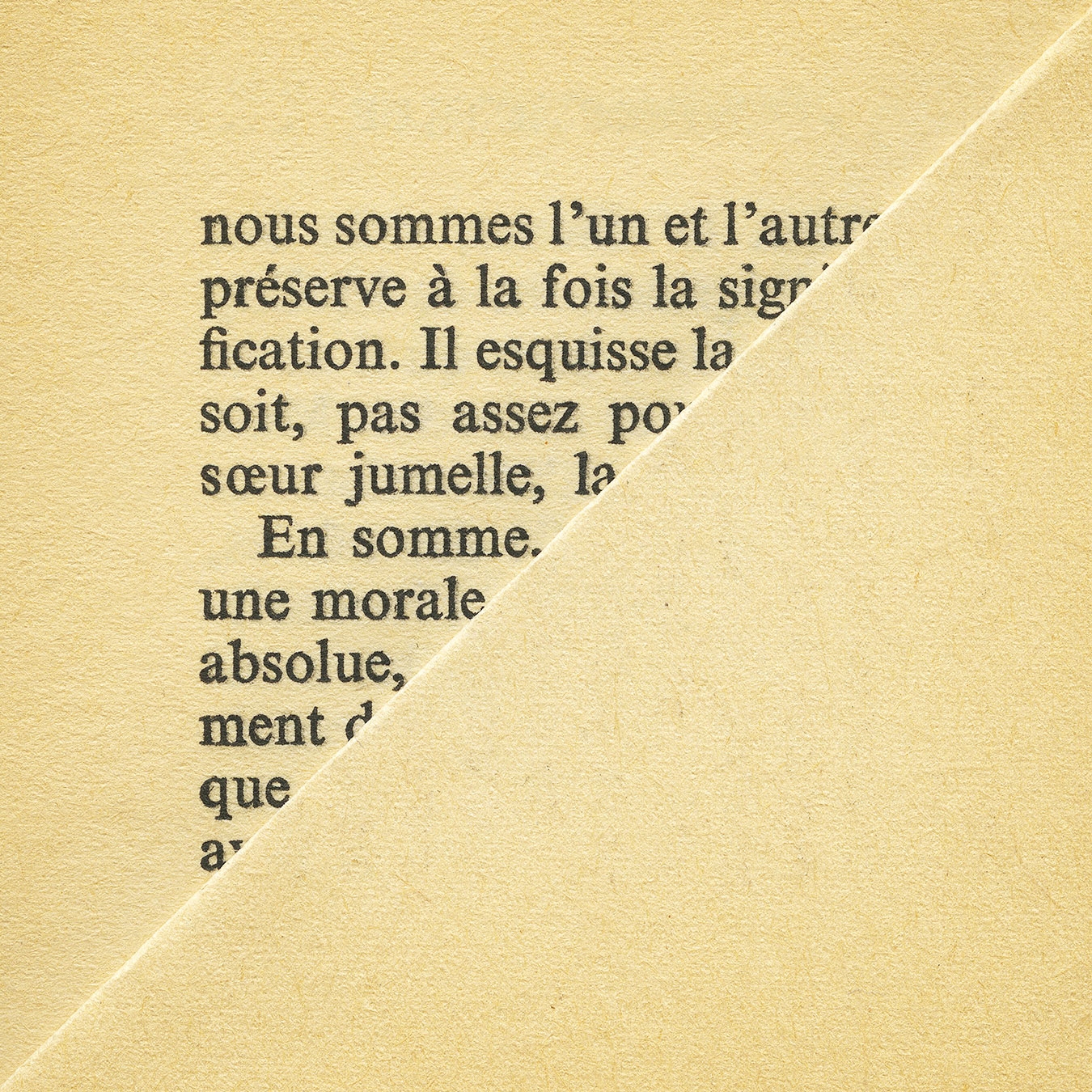 Loading
Loading Morale Absolue (Dog Ear), 2015, archival pigment print, 23 × 23 cm. © Erica Baum
 Loading
Loading Stanzas, 2015, exhibition view, Crèvecœur, Paris. © Aurélien Mole
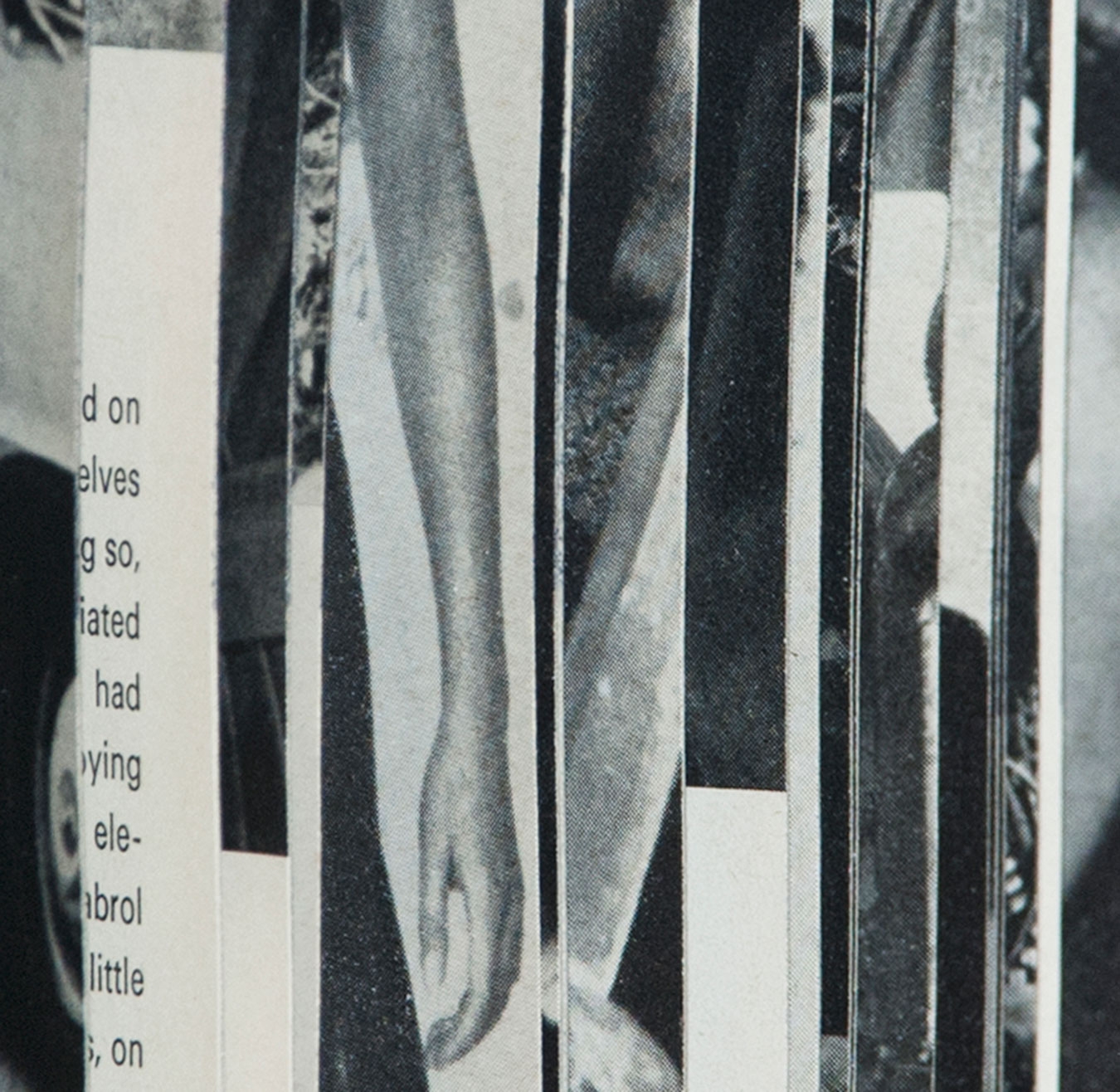 Loading
Loading Arm (Naked Eye), 2015, archival pigment print, 41 × 42 cm. © Erica Baum
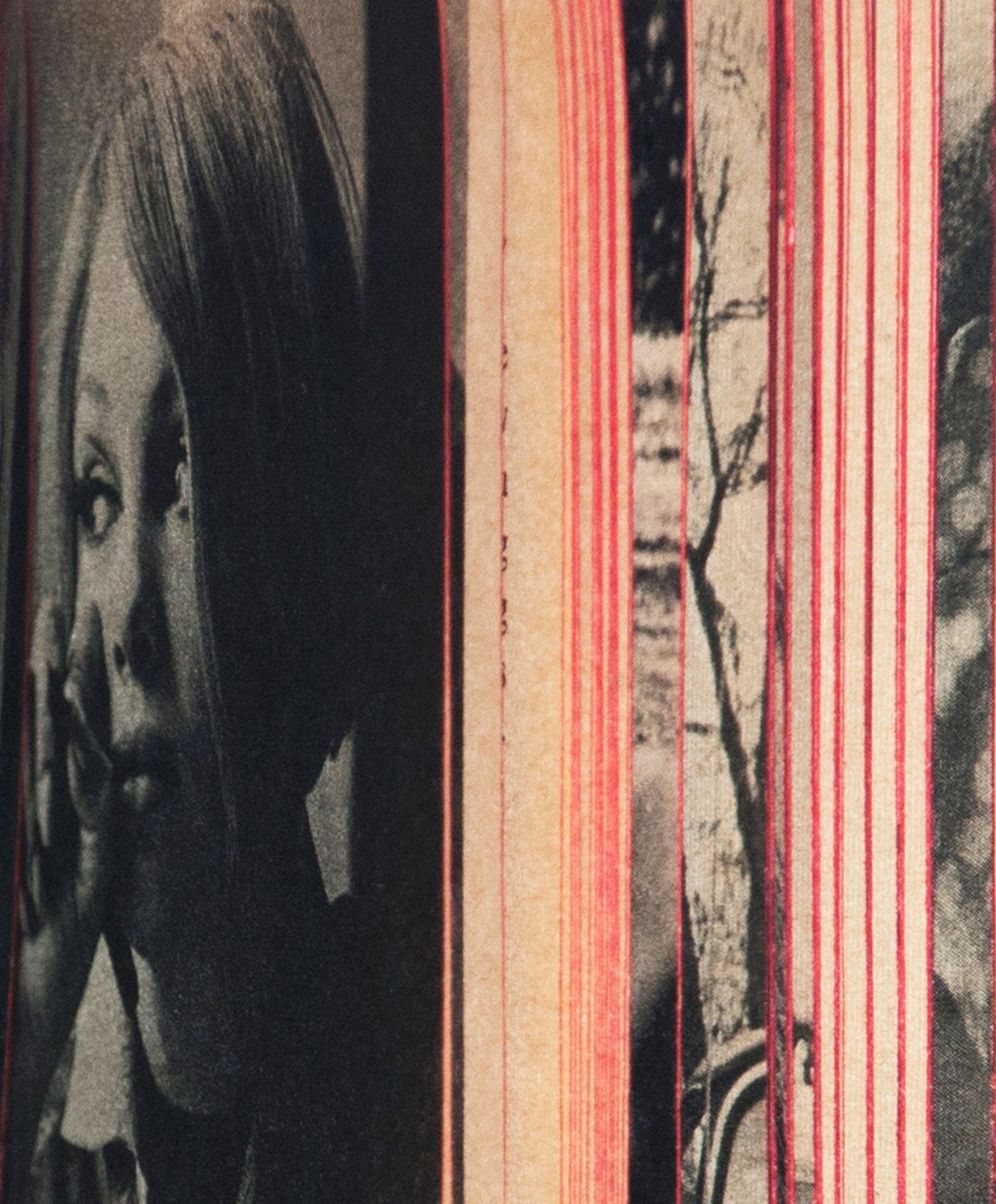 Loading
Loading Pamela (Naked Eye), 2015, archival pigment print, 46 × 38 cm. © Erica Baum
 Loading
Loading Stanzas, 2015, exhibition view, Crèvecœur, Paris. © Aurélien Mole
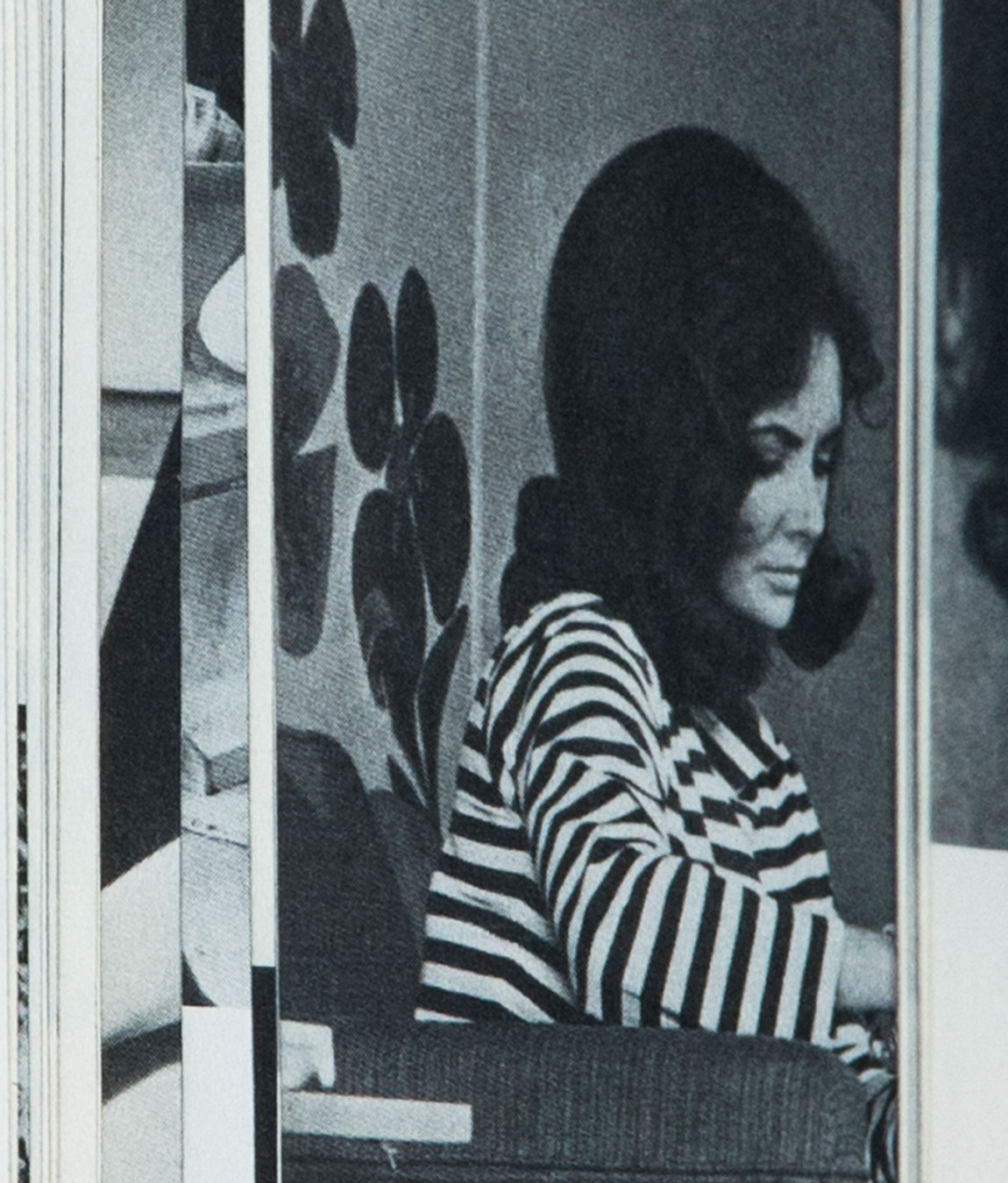 Loading
Loading Liz (Naked Eye), 2015, archival pigment print, 43 × 37 cm. © Erica Baum